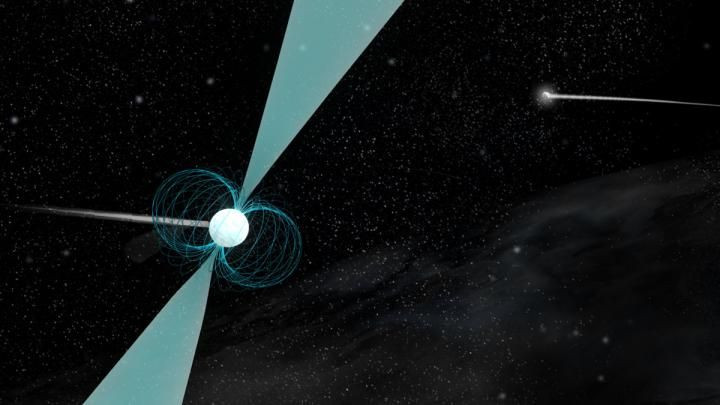Astronomers Confirm Discovery Of Extremely Rare Binary Pulsar System

A team of astronomers has confirmed that a pulsar discovered in 2012 by a group of high-school students is, in fact, part of an extremely rare binary system. This newly-discovered pulsar -- named PSR J1930-1852 -- has the widest orbit ever observed around a neutron star, which is an immensely dense object created as a result of a massive star collapsing in on itself.
Pulsars, or rotating neutron stars, emit high-energy radiation, similar to a lighthouse casting beams of light. If this beam of high-energy radiation is pointed toward the Earth, these high-energy pulses can be detected using radio telescopes.
So far, only about 10 percent of known pulsars are believed to be part of binary systems -- most of them orbiting ancient white dwarf stars. Only a handful of pulsars have ever been detected locked in orbit around a neutron star. Scientists believe that the lack of such binary systems is because of the process of a neutron star's formation.
When a neutron star, which is formed as a result of a supernova, is created, the explosion causes it to hurtle through space, making the chances of two such stars remaining gravitationally locked extremely slim.
"Given the lack of any visible signals and the careful review of the timing of the pulsar, we concluded that the most likely companion was another neutron star," Joe Swiggum, a graduate student in physics and astronomy at West Virginia University in Morgantown and lead author of a paper published in the Astrophysical Journal, said, in a statement.
The pulsar -- first spotted using the Robert C. Byrd Green Bank Telescope at Green Bank, West Virginia, by high-school students participating in a workshop funded by the National Science Foundation -- has an orbit twice as big as that of any previously known double-neutron star system. The orbit of J1930-1852 spans about 52 million kilometers, which is roughly the distance between Mercury and the sun.
"The pulsar's parameters give us valuable clues about how a system like this could have formed," Swiggum said, in the statement. "Discoveries of outlier systems like J1930-1852 give us a clearer picture of the full range of possibilities in binary evolution."
© Copyright IBTimes 2024. All rights reserved.






















